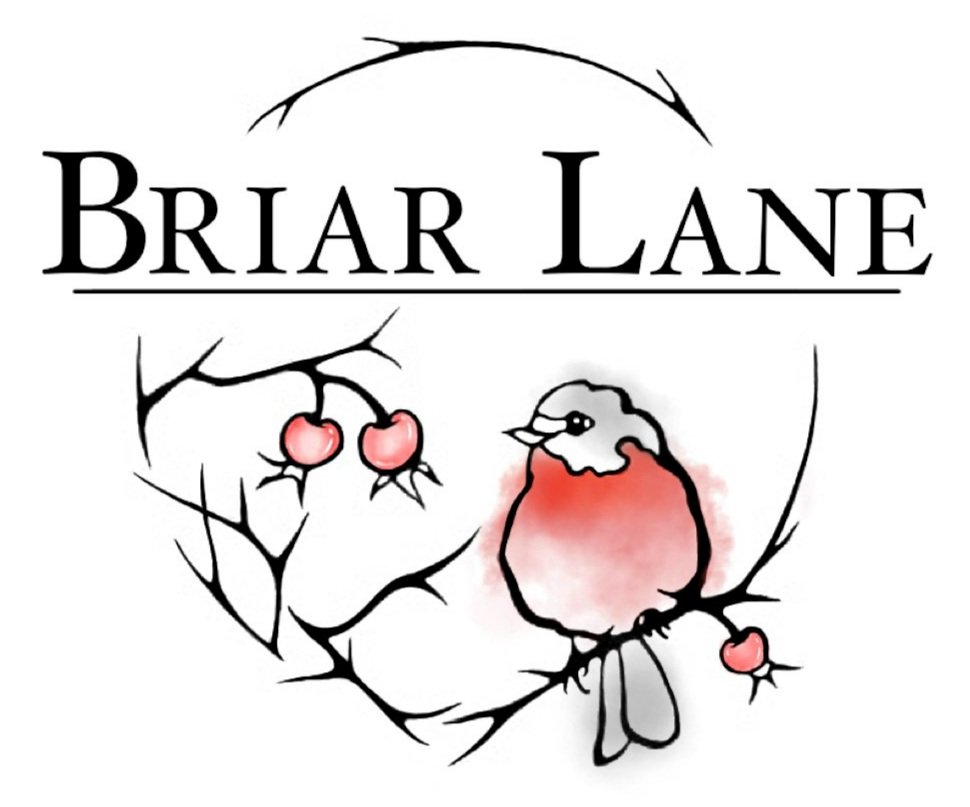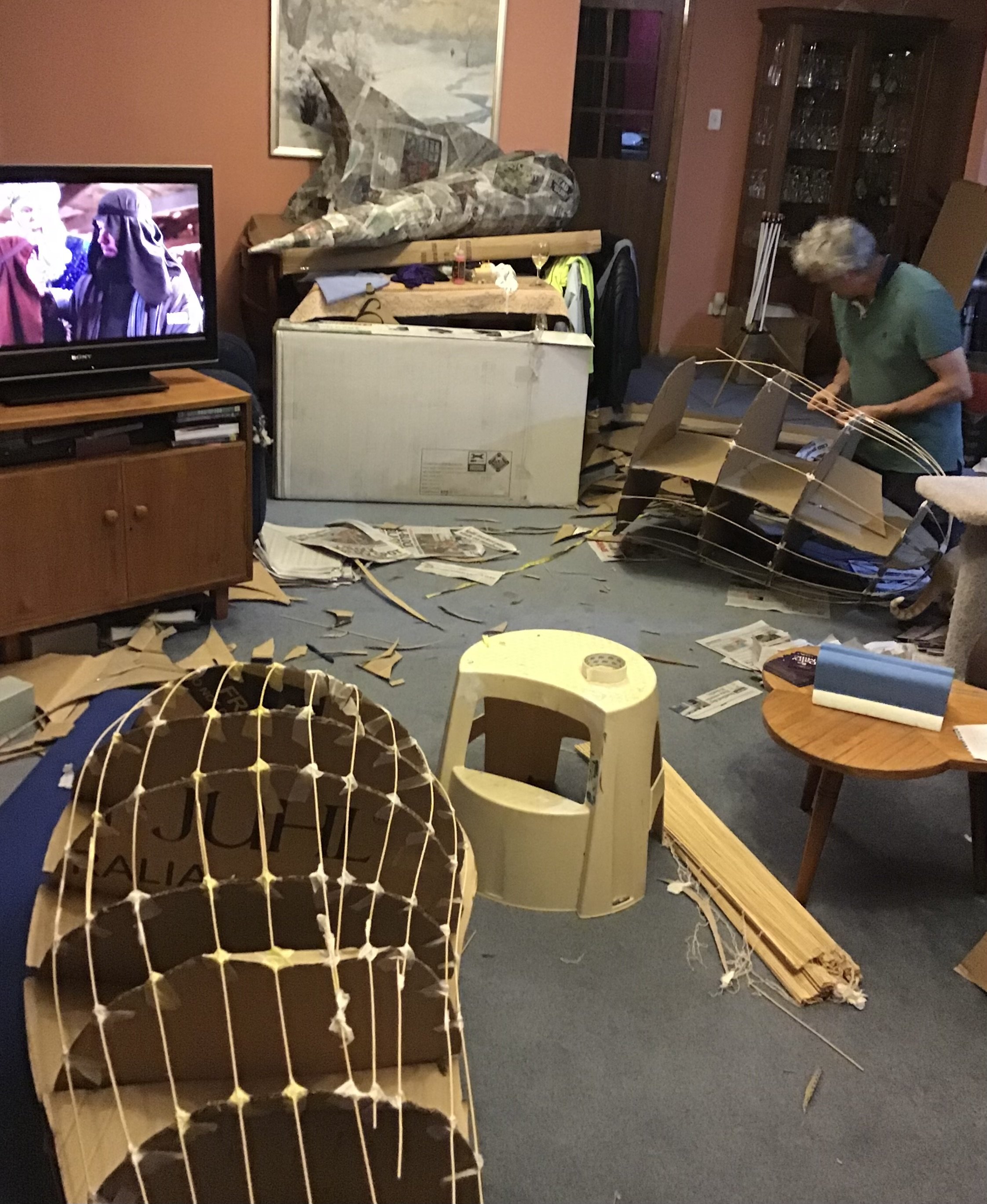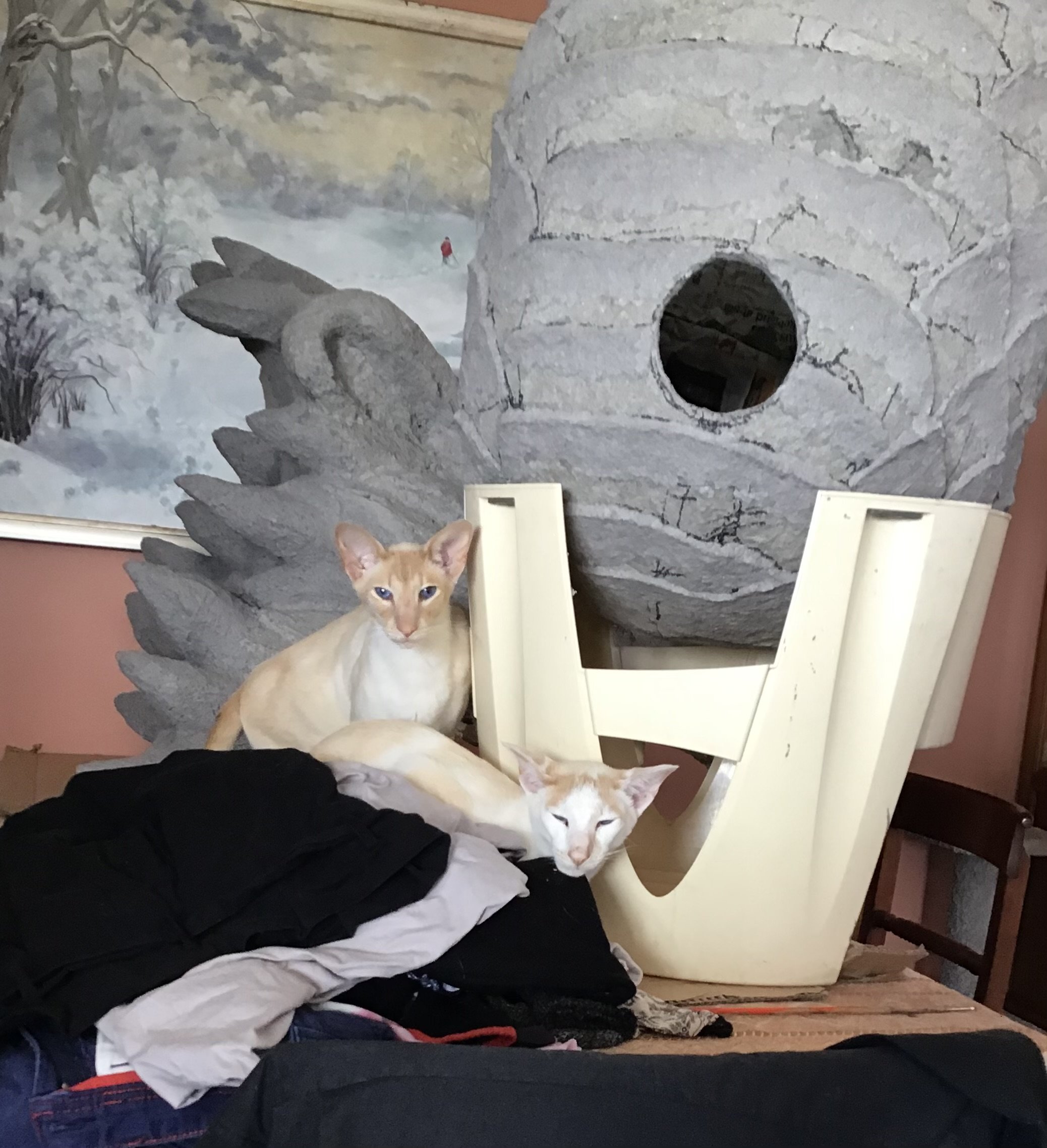Making Dragons
In 2020, Peter and I were approached by Jacquelyne France-Marsden, the principal of Ballet and Dance Arts Tasmania, to create the character of “Falkor the dragon” for a production of The Neverending Story. The ballet was to be staged at the Princess Theatre, Launceston, in December of that year.
The Brief.
The brief was that he had to be BIG. He also had to be light. He was to be a puppet created in separate sections. Each section would be carried by two or more dancers, allowing the illusion of him swooping around the stage and then separating and disappearing.
Big and light is a tricky combo. We considered foam, wire and fabric, and then dismissed them for various reasons. Papier mache emerged as the winner, as it would allow us to create a solid form that we could sculpt, without being too heavy, however, we still needed a frame on which to apply the paper and glue. I remember as a child applying papier mache over a blown up balloon, and then peeling the balloon out once it was dry. Now we just needed several really large and oddly shaped balloons. Hmmm, perhaps we’ll keep thinking.
Step 1. Creating The Frame.
The first step was to create a cross-section of the dragon’s body. This would define the bulk of his shape, and give a structure over which we could construct a “skeleton”. Cardboard pieces cut into arcs were slotted and taped together to create an approximate 3D shape.
Next, we refined the shape by adding supports for the layers of paper and glue. For this we used fine cane strips cut from an old blind we had lying around. Each piece was painstakingly taped to the cross-section until we had formed a shape that would support the layers of paper to come. We had entered that creative space where you’re not really sure what you’re doing, but you’re doing it anyway. This was probably the most challenging part of the construction, and the point at which our lounge room descended into a chaotic mess from which it wouldn’t emerge for at least a couple of months!
Step 2. Paper and Glue.
There’s not too much to say about this step really, except that it went on and on and on.
Step 3. More Paper and Glue.
Now that we had the basic shape formed, we had some decisions to make. Hand holds had to be carved into the sections so they could be lifted and moved easily. Also, we wanted to fashion the dragon’s scales, but using layers of newspaper as we had been, would just take too long. We needed to create more “bulk” that could be moulded or sculpted, so we switched to using paper fibre ceiling insulation. Mixed with glue, this fibre gave us the ability to shape the scales and create some character. Sections would be half covered with fibre mix and then left to dry whilst we moved on to another piece. It was a slow process however, as the increased bulk also required increased drying time between layers. In this fashion, we continued rotating around all the sections of the dragon until finally, after several weeks, they were all finished. During this stage our house took on a slightly surreal quality, with giant sections of dragon body drying on every available surface, but our two little siamese beasties, Valentine and Bing, quite enjoyed the novelty.
Step 4. There’s Issues.
The brief was to make the dragon big, but there came a point where we realised we had made it too big. The central section of the belly was very large, and there is a point at which even papier mache gets heavy. I remember watching Pete trying to lift this central section up above his head and it was awkward. There was no way young ballerinas were going to manage this; we needed to rethink this quickly. The easiest solution was to remove this section, but this would also require us to remodel the pieces either side of it to re-establish a cohesive flowing shape. It was also at this point that we removed the internal cardboard cross-sections and cane supports.
Step 5. The Head.
Although we had the basic shape of the head formed, we still needed to create the large scales or feathers without adding additional weight. The solution lay in expanding builder’s foam which weighs practically nothing. This magical stuff explodes out of the can and then sets in shape. Once dry, we were able to carve it with a blade to shape the scales around the head. Then a light coat of pulp fibre was applied so the “look” remained consistent, and voila!
Step 6. Paint







The whole process had already been fun, but now we got to play with paint. This bit was going to be extra fun. Base colours of warm oranges, yellows and reds were layered over each other, and then we began embellishing the form with shadow and light. The final touch was to wash the scales and features with iridescent paint to reflect the stage lights, and give her an other worldly look. And yes, I did say “her”. Once we added the eyes and eyelashes, there was no doubt in our minds that she was a girl. In the story Falkor is a boy dragon, but just look at that face. She’s definitely a girl!
She Makes Her Debut.
On Friday the 11th of December 2020, Falkor takes to the stage at the Princes Theatre in Launceston. A big thank you to Jacquelyne France-Marsden for the use of the following gallery of photos shot during production.
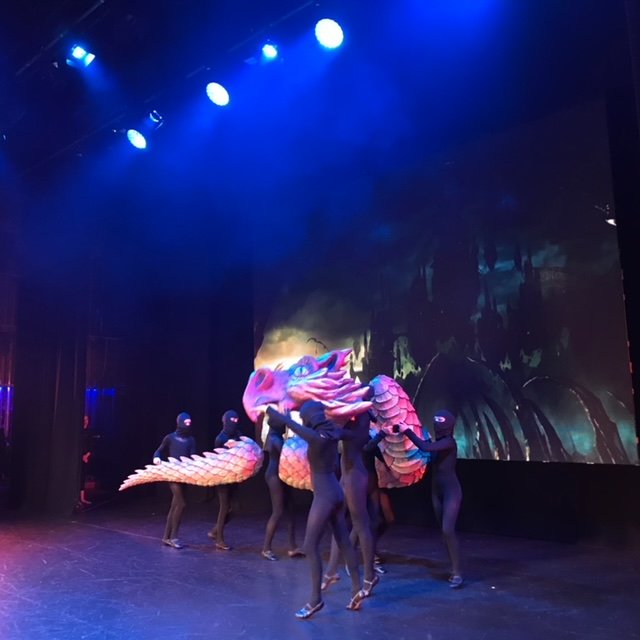
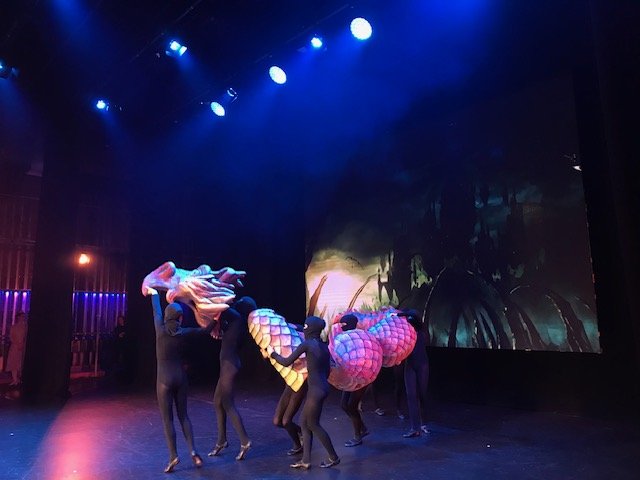
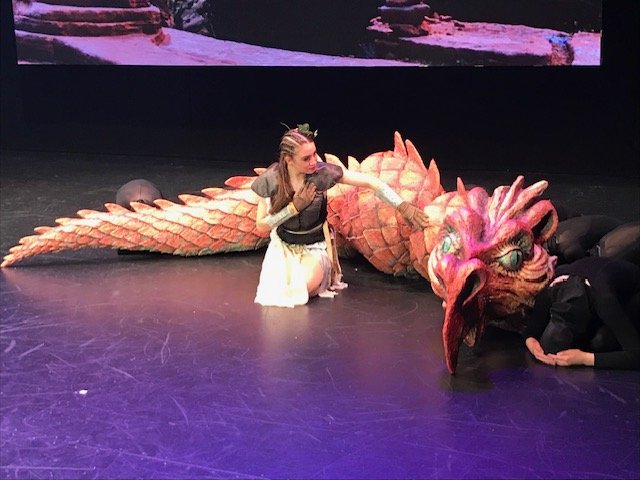

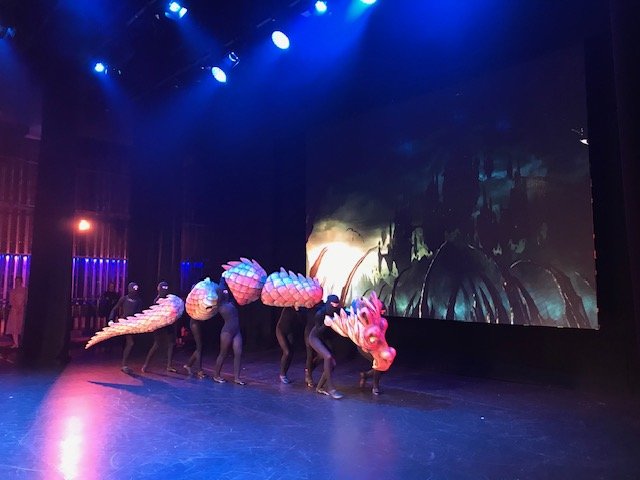
The Missing Piece
And what happened to the missing piece of the dragon?
Pete turned it into what we now call “The Big Red Head”
I don’t know why!
